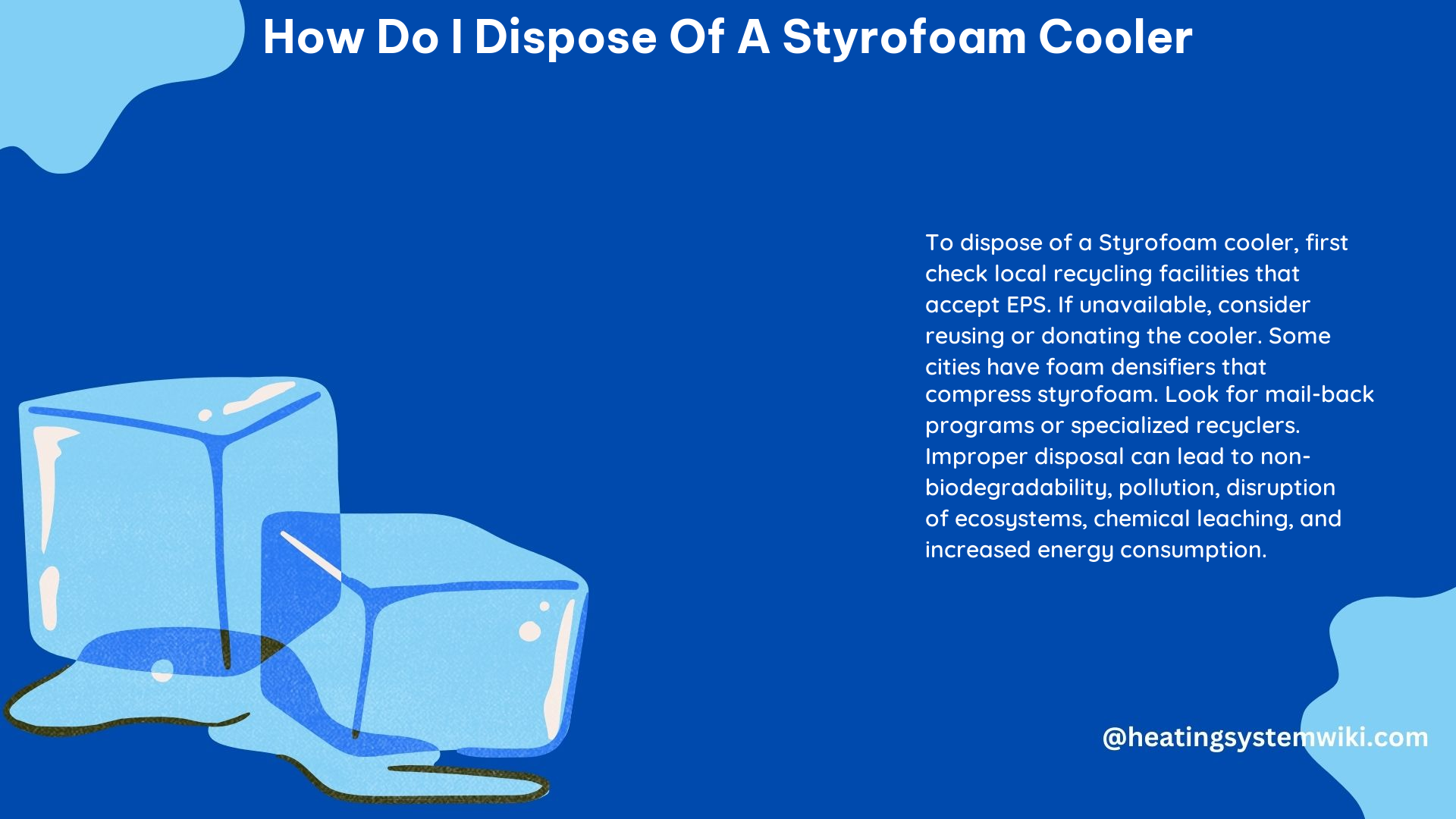Styrofoam coolers are widely used for various purposes, including shipping perishable items and transporting food and beverages. However, disposing of these coolers can be challenging due to their non-biodegradable nature and the limited availability of recycling facilities. This guide provides detailed information on how to dispose of a Styrofoam cooler, along with technical specifications and a DIY approach.
Technical Specifications
Styrofoam coolers are made of expanded polystyrene (EPS), a type of plastic with the recycling code #6. EPS is a lightweight, rigid, and buoyant material with excellent insulation properties. It is made up of 98% air and only 2% polystyrene, making it challenging to recycle due to its low density.
The average Styrofoam cooler weighs around 1-2 pounds (0.45-0.9 kg) and has a volume of 12-48 quarts (11-45 liters), depending on the size. The thickness of the Styrofoam walls typically ranges from 0.5 to 1.5 inches (1.27 to 3.81 cm), providing effective insulation for the contents.
Disposal Options

1. Local Recycling Centers
Contact your local recycling center or waste management facility to inquire about their policies regarding Styrofoam recycling. Some facilities may accept EPS for recycling, while others might not. If they do, they might have specific instructions or drop-off locations for Styrofoam materials.
When contacting the recycling center, be prepared to provide the following information:
– The approximate size and weight of your Styrofoam cooler
– Whether the cooler is clean and free of any food or other contaminants
– If the center has any specific requirements or guidelines for Styrofoam recycling
2. Reuse or Donate
If your Styrofoam cooler is still in good condition, consider reusing it for future purposes. Styrofoam coolers can be handy for picnics, camping trips, or storing perishable items. Alternatively, you can donate it to local charities, community centers, or organizations that might find a use for it.
Before donating, ensure the cooler is clean and in a usable condition. Some organizations may have specific requirements for the size or condition of the Styrofoam cooler they accept.
3. Foam Densifier
Some cities or recycling centers have foam densifiers, which are machines that compress and melt Styrofoam, reducing its volume. If such facilities are available in your area, you can inquire about dropping off your Styrofoam coolers there.
Foam densifiers can typically process Styrofoam with a density of 1.5-2.0 pounds per cubic foot (24-32 kg/m³). The compressed Styrofoam can then be transported to a recycling facility more efficiently.
4. Mail-Back Programs
Some organizations or manufacturers have mail-back programs specifically for Styrofoam products. They provide instructions on how to package and send the Styrofoam back to them for proper recycling or disposal. Look for any such programs available in your region.
These mail-back programs often have specific requirements, such as the maximum size or weight of the Styrofoam items they can accept. Be sure to follow the instructions carefully to ensure your Styrofoam cooler is properly handled.
5. Specialized Recyclers
In certain areas, you might find specialized recyclers or waste management companies that accept Styrofoam. They might have the necessary equipment, such as densifiers or compactors, to handle Styrofoam recycling. It’s worth checking if any of these facilities are accessible to you.
When contacting specialized recyclers, inquire about their specific requirements, such as the types of Styrofoam they accept, the condition of the material, and any fees associated with the recycling process.
DIY Approach
If you cannot find a local recycling facility that accepts EPS, you can consider a DIY approach by dissolving the Styrofoam in acetone. This process turns the Styrofoam into a blob of plastic that can be used as glue or modeling material.
However, this method should be used with caution, as acetone is highly flammable and can cause harm if not handled properly. Ensure you have proper ventilation, wear protective gear, and follow all safety guidelines when using acetone.
Environmental Impact
Improper disposal of Styrofoam coolers can have several environmental consequences, including:
- Non-biodegradability: Styrofoam can take hundreds of years to decompose, contributing to the accumulation of plastic waste in landfills and the environment.
- Pollution and litter: Discarded Styrofoam can break down into smaller pieces, contributing to microplastic pollution and harming wildlife.
- Disruption of ecosystems: Styrofoam waste can negatively impact aquatic and terrestrial ecosystems, affecting the food chain and biodiversity.
- Chemical leaching: Styrene, a component of Styrofoam, can leach into the environment and potentially contaminate soil and water sources.
- Energy consumption and greenhouse gas emissions: The production and disposal of Styrofoam require significant energy, contributing to the overall carbon footprint.
Proper disposal and recycling of Styrofoam coolers can help mitigate these environmental impacts and promote a more sustainable waste management system.
References
- How to Recycle Styrofoam Coolers – YouTube, https://www.youtube.com/watch?v=HNJN31IvgN0
- How to Recycle Styrofoam Coolers: The Complete Guide, https://impactful.ninja/how-to-recycle-styrofoam-coolers/
- How Do You Dispose of Styrofoam Coolers?, https://www.packaginghero.com/styrofoam-cooler-disposal
- Foam Recycling Centers | Styrofoam Recycling Near Me, https://www.homeforfoam.com/recycling/
- r/recycling – How do I recycle these? They are KoolTemp styrofoam coolers., https://www.reddit.com/r/recycling/comments/1782zr9/how_do_i_recycle_these_they_are_kooltemp/
